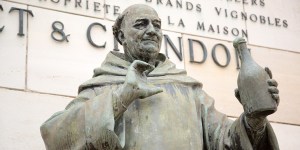Lenten Campaign 2025
This content is free of charge, as are all our articles.
Support us with a donation that is tax-deductible and enable us to continue to reach millions of readers.
Most of the time, the Catholic church is referred to as the Roman Catholic Church. There are several different historical reasons for it. However, the denomination is somehow misleading —the Catholic Church is far from being exclusively Roman. It comprises 24 particular churches, the Latin Roman church, yes, being the biggest of them all.
The word “catholic” literally means universal in the original Greek — katholikos. It was used for the first time in a letter sent by Saint Ignatius of Antioch to the Smyrnaeans around the year 110, and then repeatedly included by other early fathers in several different texts, letters, sermons, and catechetical lectures such as those of Saint Cyril of Jerusalem. It was finally used formally and authoritatively to refer to Christianity as the official religion of the Roman Empire, both Eastern and Western, with Theodosius’ edict De Fide Catholica, issued in the year 380.
In short, Catholicism is far from being a homogeneous tradition. It is rather multifaceted, rich, oftentimes dissimilar. All of the 24 churches that make it up (Eritrean, Maronite, Syriac, Greek Byzantine, Ethiopian, Coptic) have distinct liturgical, spiritual, theological, and canonical traditions that have been preserved and passed on generation after generation. It is quite a complex heritage that, in spite (or perhaps because) of its diversity, is considered universal — literally, catholic — by those who share in it. It is no wonder, then, that there are things we might not know about it. Here, we wanted to share five curious things you might not know about the Catholic Church.
1. Universities are a Catholic invention.
Thinking of the Middle Ages as a dark era is a worn-out cliché. The accusation was originally put forward by the Renaissance humanists who wanted to understand themselves as direct heirs of classical antiquity.

The university system as we know it was developed in Europe around what were then called “cathedral schools”: academies, usually attached to a monastery or cathedral, for clerics who would study canon law, theology and philosophy. Soon, these schools opened their doors to the laity, thus becoming became literacy centers, granting the very same degrees we still strive for today: bachelor’s, master’s, and doctoral degrees.
2. Monks helped create the perfume industry. But it was an accident.
A few years after the Carthusian Monastery of Saint Giacomo was finished (in the 14th century) the prior was taken by surprise at the news that the queen who had donated the land for the building, Giovanna de Angiò, was to make an official visit. He rushed to make a floral arrangement, with the most beautiful flowers of the island, to receive her.
Once the queen left, when the flowers were to be thrown away, the prior noticed that the water (that had not been changed in three days) had acquired a fragrance unknown to him. He took the water to a botanist monk, who traced the origin of the scent back to the “Garofilum Silvestre Caprese.” That water, so the story goes, became the first perfume of Capri.
3. There’s a proper, official way to bless cheese.
Chapter VIII of the Rituale Romanum, a liturgical manual dated 1614, includes special blessings for almost anything you might use on a daily basis. The chapter is titled “Blessings of things designated for ordinary use.” In it, you will find blessings for cheese or butter, for seeds, for salt or oats for animals, fishing boats, tools used by mountain climbers, and even beer.
4. The last bearded pope was Innocent XII. He was pope from 1691 to 1700.
Both Greeks and Romans, during the time of Christ, would shave. In some very early images of the baptism of Christ, Jesus is shown as being beardless, unlike in most Byzantine representations. As early as the 6th century, English canonical law ordered clerics to “allow neither hair nor beard to grow freely” (Clericus nec comam nutriat nec barbam).
This prohibition was strictly enforced all throughout the Middle Ages. The Council of Tolouse (1119) threatened with excommunication all those clerics who would let their hair and beard grow “like laymen.” But there was some gap in this law, which was interpreted as allowing the use for short, well-groomed beards. The phrase barbam nutrire (“to cultivate a beard”) used in this law didn’t seem to strictly forbid the wearing of a short beard.
However, some considered facial hair as representing a multitude of sins. Shaving would symbolically imply the “cutting away” of the sins and vices considered to be not only noxious but also superfluous, as facial hair is perfectly expendable and unnecessary. But there are practical reasons related to liturgy itself: clerics should not allow their upper lip hair to impede them from drinking from the chalice.
5. “Guadalupe” is not a Mexican name.
Guadalupe, strange as it may seem to some, is most likely not a Mexican name. In fact, it is not even Spanish, although it is originally the name of a river in the Spanish province of Extremadura.
According to some, Guadalupe is a Castilian, or standard Spanish version, of the Arabic Wadi-al-lubben, meaning “the hidden river.” The Arabic is no surprise: one must keep in mind the Iberian Peninsula was occupied for around eight centuries by the Moors, Arabic-speaking Muslims from Northern Africa. According to others, the name is an Andalusian mixture of Latin and Arabic (known as, precisely,“Latin Arabic”), Wadi-lupe, “the wolves’ river.”












